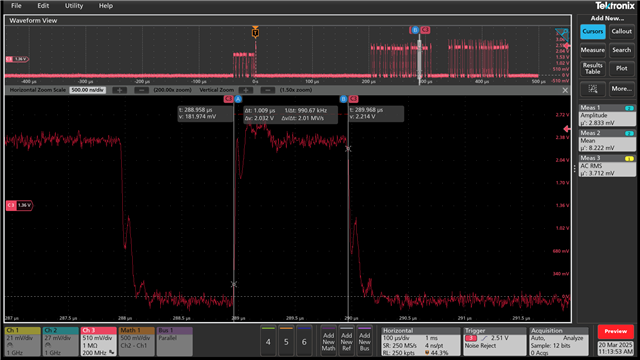Tool/software:
Here is the differential waveform that we measured near the CAN transceiver. This is measured using a differential probe probing CAN_H and CAN_L. We see the glitch on the falling edge and ringing on the rising edge. Is this acceptable? Can you please provide us with the pass/fail criterial for the waveform


